#sci fi map
Text
List of In Browser Map Generators for Worldbuilding
Ask box
I put together a list of map generators for my less cartographic-ly inclined worldbuilding friends. These are a great place to start, (or even take inspiration from!) When I was starting out I found myself studying maps and tracing over them to learn the shapes. That being said these are great to photoshop and alter once you've generated them. If you are wanting to learn to do Cartography professionally do not use these as a crutch.
I've included freshly generated maps then the same maps edited by the software's tools. It's important to note that Watabou's and Azgaar's generators have SO MANY options. Once you learn them it will completely change how you generate your maps.
Also you can totally use these for any genre.
Medieval Fantasy City Generator by Watabou
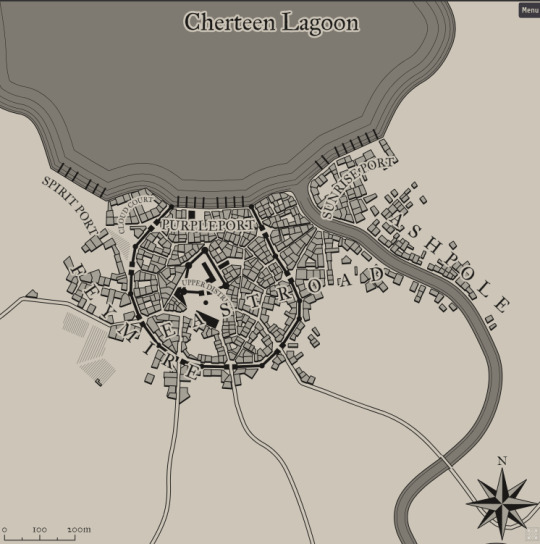

Azgaar's Fantasy Map Generator
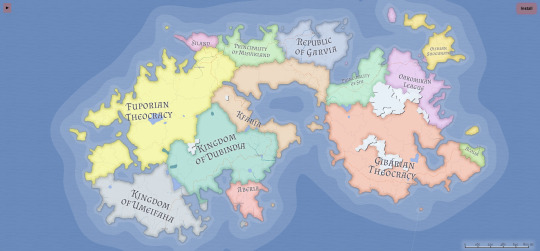

donjon; Fantasy World Generator
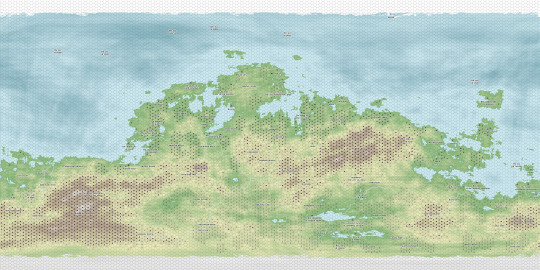
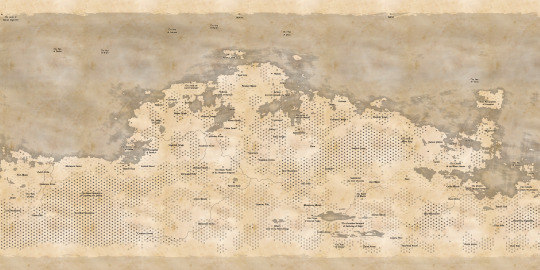
From my knowledge Donjon has no editing options BUT it has so many other generators for names and genres. Also look at that, it's rather impressive ain't it? Can't complain when it's free.
Some of my favorite generators have long died to the internet unfortunately... BUT if anyone has any more in mind please message me a link so I can update this.
#worldbuilding#art#concept art#writing#world building#worldbuilding beginner#cartography#maps#fantasy map#sci fi map#sci fi#fantasy
13 notes
·
View notes
Text
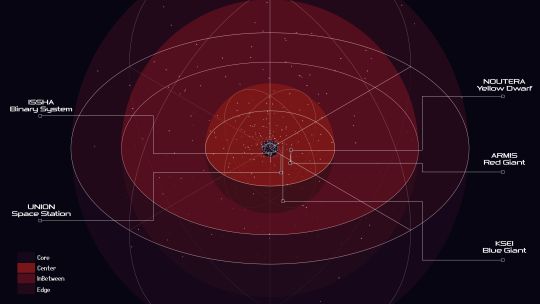
I made a map for my story ! Click on the image for better quality
The action takes place in an open star cluster, the name of which can be roughly translated from Isshan to "the One With A Thousand Stars" / "the Eternal Warden" (though the Isshan word for "star" has other meanings, the first version is the most widely used translation (contrary to its name, the cluster "only" has around 700 stars)).
The Warden is around 40 light years in diameter and can be divided in 4 zones : the Core, the Center, the InBetween and the Edge.
The Core is unhabitable and inexplored, due to the lethal radiation levels caused by the high density of stars.
The Center is where most of the population of the cluster lives. It contains the 3 originally inhabited systems : Issha (the Captain is Isshan), Armis (birth place of Etha and Meden) and KseI (uppercase i, not lowercase L) (home of the KseIn, lizard-like people. The Lieutenant is half KseIn). Also in the Center are Noutéra, the planet given to the Humans by the Union, and in the centroid of the Issha-Armis-KseI triangle, the space station housing the government.
The InBetween, less populated than the Center but still under Union protection, is where most of the resources circulating in the Union are extracted. Many systems contain at least one outpost.
The Edge has been abandoned by the Union. It is scarcely populated, with few inhabited systems and fewer resources. Some Isshan outposts, dating back to the Exploration era, are scattered here and there. It is home to pirates, warlords, mercenaries and bounty hunters. The Edges are the hunting grounds of the Imperator.
Most of the One With A Thousand Stars is still unexplored. There are rumours of pirate factions warring in the Center, on the other side of the Core, and plenty of legends to fill the minds of spationauts with dread and wonder.
#worldbuilding#sci fi story#sci fi map#original story#science fantasy#space opera#the artowl#radio isotope#i hope the image is not too fried by the compression#the type of star for each system was decided by rule of cool and are subject to change if i ever dare to look into xenobiology#this whole thing is brought to you by me outlining and realising that my travel times made no sense#so i also overhauled my wormhole system and calculated the average speed of my ships in normal propulsion haha#happy to report that none of them go faster than 1.5 percent of the speed of light
6 notes
·
View notes
Text

I'm obsessed with Flat Earth conspiracy maps so I made my own, I hope it catches on 😇
1K notes
·
View notes
Text

MΛNITU (2024)
youtube / vimeo
Set of 144 glyphs, displayed in digital and analogue form simultaneously. Light installation
#sci-fi#art#cyberpunk#ui#hud#graphics#high tech#digital#digital art#fui#oscilloscope#analogue#light installation#art installation#installation#electronics#mapping#projection#abstract#abstract art#manitu
164 notes
·
View notes
Photo

This was one of the commissions I had the pleasure of doing a while back for the very kind Addi!
#art#art commission#art comm#illustration#figure#portriat#sci fi#star chart#stars#map#character design
529 notes
·
View notes
Text

Modular Subway | Build your own train station with 20 modular tiles!
Embark on a thrilling race through the subway system in an attempt to find a dangerous device that is set to explode underneath the city's most populous city. Can you find and disarm the bomb in time?
Build your own underground subway system with these 20 modular tiles! These can be rotated and arranged in various ways to make your own customized dungeon.
These tiles come with abandoned and unfurnished variants for even further flexibility and freedom.
You can download the first 8 tiles for free here.
Check out my free map archive here.
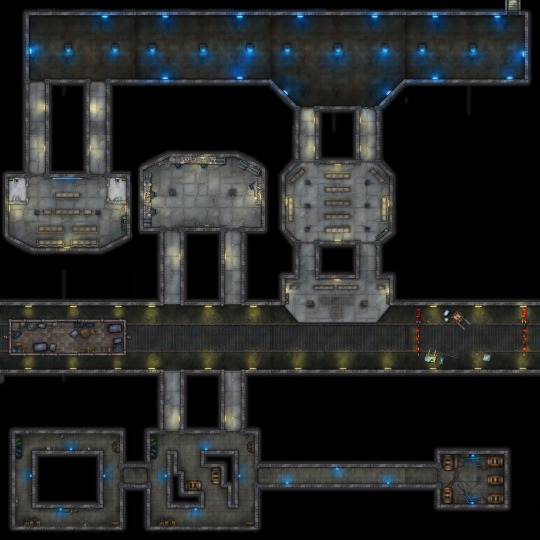
#dnd#d&d#pathfinder#shadowrun#tabletop#ttrpg#cartography#battlemaps#battle map#sci-fi map#vtt#foundry#roll20#cyberpunk red#delta green#modern Battlemap#sci-fi Battlemap#call of cthulhu#cyberpunk
74 notes
·
View notes
Photo


The Sci-Fi Industrial Interiors
Here's a preview of my new modular interior pieces! These are hand-drawn map tiles with an industrial sci-fi theme, easily arranged into whatever custom battle map you might need.
→ See more on 2-Minute Tabletop
#ttrpg#tabletop#dungeons and dragons#dnd#dungeons & dragons#d&d#d&d5e#dnd5e#pathfinder#gurps#rpg#top-down#battle map#map#cartography#encounter#geomorph#starship#sci-fi#science fiction#starfinder
386 notes
·
View notes
Text
Pangea-like alien world for a ttrpg


I'm currently working on a setting, one that is tied to a TTRPG I want to try, Ryuutama, a Japanese natural fantasy game about traveling.
I wanted to do it in a setting that pushed beyond what we would expect as traditional. So not only is it in a fantasy world other than our own, its set with its own unique biomes, especially with the colors.
The basic idea is a large Pangea-style continent on an alien planet (debating moon). Here the atmosphere (and so the sea) is green instead of sky-blue, with vegetation that reflects blue light and soil in the purple to red scheme.
I've been having some difficulties with getting the biomes as I want them. The lower image is a more "realistic" concept of what a Pangea style continent might look like. Less biodiversity, tropical climate at the edges with a dry interior, with the exception of a large rainshadow effect caused by a giant plateau biome. Cool dry areas in the lands southern part. A coastline that is constantly hit by wild storms and is mainly wetlands.
Its not fully accurate and I might rework it a million times, but I do think more people should consider making maps with different colors.
The other unique thing is that the only sentient lifeforms are mechanical, and that nature has adapted to the presence of metal and other things we consider "unnatural" in our world. So imagine if plant life or microbes could decay metal or trees could take in chemical run-off. I'm still workshopping this concept (lke how do they reproduce) but i like the bones of it.
19 notes
·
View notes
Text
ethnic groups* of rika
kkariko ("embodied child" in kkarikiko, a dominant language spoken throughout much of rika, originating from a mikrikka culture, part of the central ethnic grouping.)

mikkriko ("small underground child" in kkarikiko)
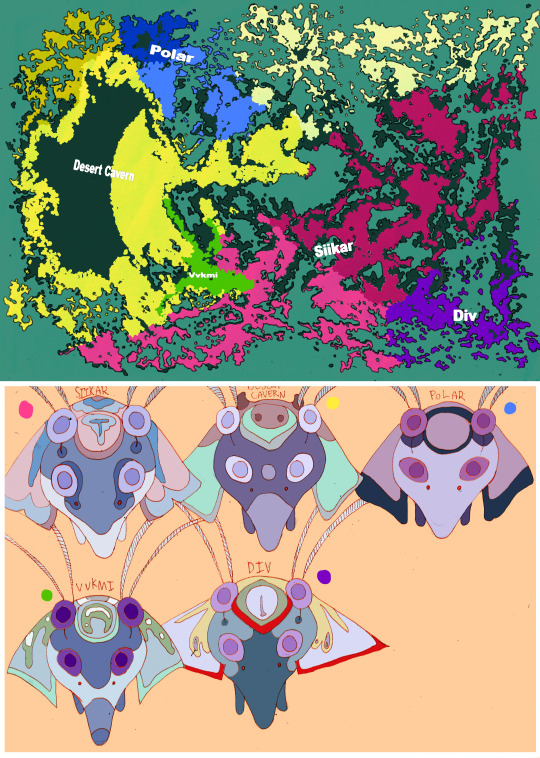
grik krog ("over the mountain" in kkarikiko)

*(these are largely political groups as opposed to genetically distinct groups. like humans, there is a huge amount of genetic diversity and interminging between geographic groups. these images are based on beauty standards and stereotypical depictions.)
#speculative biology#alien species#xenobiology#kkariko tag#worldbuilding#oc#sci fi#the divisions in color represent different culture groupings within the larger ethnic groupings#so for example. western flats as a term includes rikka cultures sinyarr cultures fori cultures and garriko cultures#(rrikrik is from a rikka culture) (karra is from a mikrikka (central) culture)#and the dark teal ground on the grik krog and mikkriko maps represent areas where those two species do not live#mikkriko live underground in cave systems. so they dont live where there arent caves#and grik krog are largely isolated in the west due to the huge big mountain range which created the western flats#grik krog arent very good at climbing mountains or swimming so they dont live on islands either
10 notes
·
View notes
Photo

Somewhere Here - Alex Andreev
129 notes
·
View notes
Text
I wrote this years ago about Worldbuilding
This is a repost from an old article I wrote on my ReshapingReality.org blog back in the day. This is the step-by-step process that I use in worldbuilding. You don't have to follow my process, but I figured it might be a good start for some writers.
To see my primary setting for my original science fiction stories as an example, I have imported 66% of my notes to my Elivera Wiki, and plan to finish importing my notes in the next year or two.
NOTE: To adapt these steps to Fantasy that has magic, the step for the magic system must include the rules of how the magic works, its strengths and weaknesses, its impact on the world/society/technology/people/culture, and its limitations. Technology is very similar in a way to magic as technology also has limitations, strengths, weaknesses, and impacts to world/society/environment/people/culture that needs addressed.
World-building 101 for Science Fiction
Whenever I world-build I start with the basics. First I need a solar system. You can take the easy way out and just use our home system, or you can build your own. If you wish to build your own, these are the steps to follow to create a fairly scientifically accurate system:
Determine what type of star will be the sun for your system. The star will determine where you can place your planet for it to be habital, it will also determine the color the star shows in the planet's skies, the radiation that impacts it, and other important attributes that effect the environment of the planet. See my blog entry here that discusses this in more detail: Worldbuilding Series Part One – a star
Once you have your star, you can focus on your planets. Read this for more information: Worldbuilding Series Part Two – the planets. To help you build both your star and planet, I’ve created a template for your world-building needs. Input in the data to have the spreadsheet generate some basic attributes that you can use in the astronomical data of your system: World-building template
Part of the process in creating planets involves the planet’s geology. The environment in which people live impact not only how they subsist but also how they build up their community, the types of buildings that would work well, what resources they have available, and how they use those resources. This post focuses more on terrestrial planets, but it does highlight some guidelines for gas giants as well: Worldbuilding Series Part Three – Planet Geology.
Now it’s important to focus in on the atmosphere of planets (if they have one) and their natural cycles. This impacts seasons, natural disasters, storms, weather patterns, long-term climate change, etc. All of which will impact the people who live on your planet. Here is my entry on this: Worldbuilding Series Part Four – Atmospheres and Natural Cycles.
The features of the planet will play a large role in the development of the sentient species’ culture and their evolution. This post highlights how to create features on the planet and how this process works: Worldbuilding Series Part Five – Geomorphology. It may be useful to take a look at my map-making post in order to create a map of the surface of your planet.
Finally, the sentient species themselves. If they are humans, this simplifies matters, and you mostly have to worry about how humanity adapts to the planet you created. This post discusses the effects of environment on a culture: Effects of Environment. You’d also have to consider the dynamics of diversity, which I highlight in this blog post (focusing more on a future earth dynamic but can be applied to humans migrating to new worlds as well): Diversity – Race. If you are creating a new aliens species, this blog post discusses some of the factors to keep in mind and offers some suggestions on how this can be done: The Science of Aliens.
Another important factor to consider is how language can influence a culture and its development. I discuss how language intersects world-building in this article: Languages and World-building. To help you create your language, examine these posts: How I craft a Language part 1 and How I craft a Language part 2.
Now remember each step above doesn't require indepth analysis and a million words of worldbuilding to complete. Sometimes all you need is some basic descriptions and ideas. From those you can then fine-tune what areas need more development so it can fit the needs of the stories you wish to write.
For example, you'll eventually need to write more about the following topics below, but focusing on which needs extensive development and which need only a brief primer can be difficult to decide! But the best way forward is to think about the stories you wish to write, and focus on the details you need to create a story that will immerse the reader in your world. Then develop those details.
Politics and Government
Diplomacy and Espionage
Economics
Education
Daily Life
Technology and Research
Cities and their infrastructure
Philosophy and Cultural Values (See this post: Thoughts on Philosophy within World building )
For some creative questions to delve deeper see: fantasy world-building question list compiled by Patricia C. Wrede. The above list compiled by Patricia C. Wrede is very much usable for science fiction writers — just focus on the questions that deal with creating a world and a culture and when you encounter the magic questions alter them to technology.
Maps
Another important aspect of worldbuilding is maps. Creating maps of your world and of your cities can be incredibly helpful with visualizing your world. It also helps track the character(s) journey across a region, the distances involved, the time needed, the environments crossed, etc.
For an example, I often create a zone map for my cities. Here is a detailed post on how to create a map: World-build: Maps
Character Design
This is just a placeholder for any primers I wrote for character design:
Primer for writing trans characters
Character Template
Resources
Books:
Wonderbook by Jeff Vandermeer
Worldbuilding by Stephen Gillett
Body Trauma: A Writer’s Guide to wounds and injuries by David W. Page, MD, FACS
The Writer’s Guide to Weapons by Benjamin Sobieck
Forensics for Writers by D.P. Lyle, M.D.
The Science of Aliens by Clifford Pickover
The Writer’s Guide to Psychology by Carolyn Kaufman, Psy.D
Space Travel by Ben Bova with Anthony R. Lewis
The Starflight Handbook: A Pioneer’s Guide to Interstellar Travel by Eugene F. Mallove and Gregory L. Matloff
The Language Construction Kit by Mark Rosenfelder
Advanced Language Construction by Mark Rosenfelder
Worlds of Wonder: How to Write Science Fiction & Fantasy by David Gerrold
The Planet Construction Book by Mark Rosenfelder
Building Imaginary Worlds by Mark Wolf
Revisiting Imaginary Worlds by Mark Wolf
The Kobold Guide to Worldbuilding by Wolfgang Bauer
On Writing and Worldbuilding by Tim Hickson
Classes/Podcasts
N.K. Jemisen's Masterclass on Writing and Worldbuilding
Roxanne Gay's Masterclass on Writing
Neil Gaiman's Masterclass on Writing and Storytelling
Levar Burton's Masterclass on Storytelling
WorldAnvil Worldbuilding Podcast
Writing Excuses Podcast
Worldbuilding Magazines Podcast
Brandon Sanderson's Writing Class
Worldbuilding Tips by Jenna Moreci
Common Worldbuilding Mistakes by Yinka
Overly Sarcastic Productions' Trope Talks
Feminist Frequency
Feel free to ask questions and share more resources or tips!
#Worldbuilding#speculative fiction#science fiction#Science Fiction Worldbuilding#Planets#geology#geomorphology#Various types of maps for worldbuilding#Resources on worldbuilding#worldbuilding tips#writing tips#writing#writing advice#sci fi writing#sci fi
17 notes
·
View notes
Text

capital worlds of the solar federation
Earth:
The ancestral homeworld of humanity is now becoming slowly overshadowed by human colonies on other worlds, the biggest of these being Sirius. Often called the new earth, most of earths wildlife and nature was transported to sirius as earths collapsing ecosystem threatens to cause a mass extinction of animal life.
Despite this, earth is still home to 150 billion humans and other species and holds important cultural sites. From the most ancient of ruins to the first megacity constructed in japan.
Most life on the planet is concentrated in these megacitys, with anything outside them considered uninhabitable. The abandoned ancient cities here have been overtaken by nature, and becoming home to gangs of looters scavenging anything left behind.
Earth is considered a very expensive world to life on, despite the standard of living for 99% of the population being far below that of human colonies across space.
The Richest of the population live in skyscrapers above the clouds, or floating cities in orbit. The air and rain in many of the megacitys is somewhat toxic, to be largely indoors. Parks are build to simulate the outside, and a artificial sky at least gives the illusion of a clear sky.
80% of wildlife has gone extinct, with the remaining few being transported to sirius.
Scientists have luckily managed to bring most animal species back from extinction trough cloning, however some are sadly lost forever.
However in recent years, thanks to the help of therian terraforming technology, a massive ecological restoration project has begun thats estimated to have restored earth by the year of 2850. So many hold hope that even in her rough condition, the homeworld of humankind can be saved.
Due to climate change, the average temperature of earth is around 19°c, wich caused mass flooding and eventually ecological disaster. The planet has 24 hour days with 365 days in a year.
Silakare:
The new homeworld of the Therians, silakare is a beautiful world of lush purple plant lifes and shallow warm oceans.
The world's surface is uninhabited, as the avian therians life in floating cities kilometres above the ground.
Silakut was the original homeworld, wich was destroyed by a supernova that was scientifically impossible and is still not understood. Silakare was once a dead moon with a barley existing atmosphere, but thanks to therians advanced technology they managed to turn it into the paradise it is today.
Animals from their old homeworld were genetically modified to life on the terraformed world, wich was transformed to resemble their old home as closely as possible.
Since then, the floating cities of silakare have become the official capital of the solar federation, with the largest of the cities being Orlos. Wich boasts a population of 240 billion and has a reputation for being a melting pot of cultures from all member species of the federation.
Silakare is relatively cold despite its tropical appearance, with temperatures around 9 degrees most of the year. A day has 32 hours with 409 days in a year.
Zadrik:
Homeworld of the Ilgorans. Its the smallest of the capital worlds, around the size of mars.
Its surface is covered in the ilgorans iconic city trees, enormous tree like plants specalized to grow into massive towers and house thousands of ilgorans.
In many ways zadrik is a lot like earth before the ecological collapse of the 25th century, with lush forests of red plants and the chirping of the slugbirds in their canopies.
Like the ilgorans, most life on zadrik is comparable to molluscoids. Most have a hard shell of sorts and posses a soft inside with hermaphroditic reproductive organs.
The planet itself is actually a moon orbiting the gas giant of Zuldrun, wich is often seen as the shell of a deity in ilgoran religions.
Zadrik is moderately warmer than earth at 31 degrees, with 19 hour days and 290 days in a year.
Thaul:
Home of the Vardee, and the biggest known habitable world in explored space.
This size is likely due to not being formed naturally, instead being artificially constructed 300 million years ago. The core is theorized to have been a smaller moon of planet that was artificially turned into a planetary core. Massive towers hundred of kilometers wide run from the surface to the core, likely as some sort of maintenance system.
Underneath the surface are tunnels that run underneath entire continents, and go even deeper into unexplored areas of the planet.
The vardee and many other animals of thaul likely descend from pets that these ancient “architects” kept.
This is evidenced my murals that depict these architects and being that looks strikingly similar to a lot of lifeforms inhabiting thauls oceans and continents. The architects themselves seem to have been somewhat humanoid, or at least bipedal. Sadly most murals are extremely eroded and damaged, making it hard to make out details.
Vardee build their cities in the massive towers that run to the core, wich are large enough for each tower to act as its own nation.
Most of the towers have only the first few hundred floors explored, many of wich have been flooded or house entire ecosystems of subterranean lifeforms. The deepest any explores got was floor 450 In the tower city of zulkran which is also the planetary capital. The bottom most layers were filled with overgrown ruins of buildings, home to entirely unknown blind animals. After DNA testing, it was revealed that these were actually the closest living relatives of the Vardee, with a 97% match.
The vardee rarely travel outside of the massive tower cities, meaning large portions of thaul are mostly uninhabited and wilderness. They take great care and pride in this wilderness, it even being a afterlife in some believes.
The average temperature of thaul is 16°c. Days are 30 hours long and a year lasting for 490 days.
Lirthak:
Home to the Olorans, and the most unique of the planetary capitals.
The planet itself looks like a barren rock from the surface, however underneath is a expansive cave system large enough to house forests, oceans and steppes of bioluminescent grass.
Olorans evolved in these steppes as lirthaks equivalent to herd animals, eating the blue glowing grass with their prehensile and dexterous tongues. This combined with having to find strategies to outsmart predators aswell as remembering the layouts of the cave system lead to the olorans extreme intelligence.
Over time they developed an advanced civilization with technological wonders rivalling the therians. With the cities becoming overcrowded however, they sought to see whats outside of the cave systems. They were aware that there was something outside of it, but this was only realy discover relatively recently thanks to modern technology. Problem was, there were only a few dozen exits out of the cave systems, and these lead to the uninhabitable surface of their homeworld.
So the top scientists and engineers got together to build massive domes on the surface, wich were then artificially filled with ecosystems and cities.
After this, oloran civilization was never the same. Soon after they constructed their first off world colonies, and travelled outside of their home system.
With the megacorporations that rule oloran civilization needing space for their manufacturing and housing the population of the overcrowded cities, two rings were build using material from lirthaks 2 moons. The olorans had no sentimental attachment to the moons due to not even knowing about their existence only decades before, and being as pragmatic as they are simply saw them as unused construction material orbiting their homeworld.
These rings now house everything from entire sectors of industry, housing, city sized malls, megacomputers, farming sectors and even artificially created beach resorts for tourists.
Lirthak and its two rings now have the largest population of any planet in the galaxy, with a grand total of 990 billion people calling it home. Its predicted to reach 1 trillion inhabitants by 2790.
The cave systems of lirthak are very cold due to not having sunlight, with average temperatures around -30°c. The rings are kept at around 20°c. A Lirthak day is 15 hours with 270 days in a year.
#scifiart#sci fi writing#sci fi planets#planets#space#solar system#planet art#sci fi planet#future planet#map art#my art#solar archives
29 notes
·
View notes
Text
there's people who have incredible levels of talent for worldbuilding and subtle storytelling and even visual effects and they use it to make intricately crafted interconnected ASMR videos with fucking lore and shit and most people will NEVER know because they fall the fuck asleep
#look up atmosphere asmr i am begging you#she does THE WHOLE THING herself. the writing the acting the editing the props THE MODELING OF THE 3D BACKGROUNDS#and the lore is so fucking deep it has its own wiki with fucking MAPS and detailed descriptions and backstories for characters#and it's not like One story in One setting that goes on chronologically with every new video#it's some fucking time travel/dimension travel/fantasy AND sci-fi/not always in order stuff#like you'll have one video that's like ''elf gives you a facemask :)''#and you find out that the elf exists between dimensions and is the sister of a previous character and Oh this takes place after THAT video#spielberg who the fuck. anastasia atmosphere can do movies so good#also ephemeral rift has cool lore too but there's So much of it that i genuinely don't know too much about it yet#despite having been watching rift for like. Years. margaret my beloved
22 notes
·
View notes
Text
Continuation of this
BEHOLD, MY CREATION
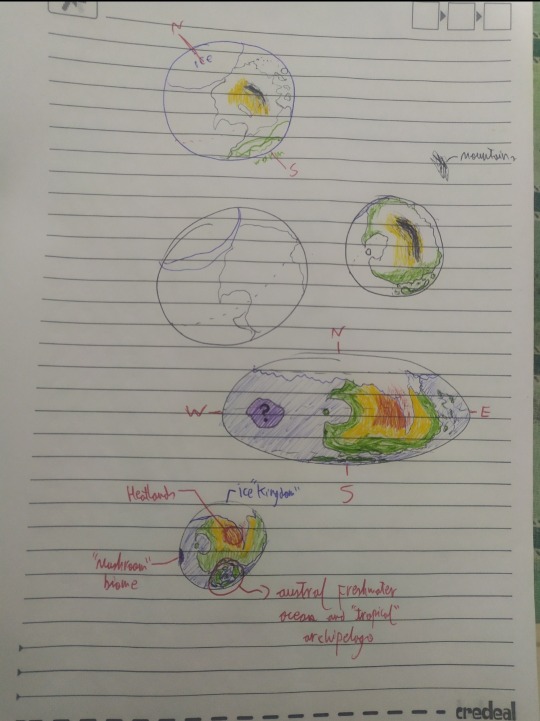
Also, croc-descendants and dinosaurs still exist because of course they do. And specially those commonly mentioned organisms which are older than dinosaurs and still exist
#worldbuild#worldbuilding#map#globe#future fiction#supercontinent#science fiction#sci fi#xenofiction#autistic artist#plural artist#fiction#nd fiction#nd artist#future earth
12 notes
·
View notes
Text




変わらないキミは特別です
#sci-fi#art#cyberpunk#ui#hud#high tech#digital art#fui#futuristic#fx#y2k#seal#magic#magic seal#mapping#projection#sega#dreamcast#acid#graphics#digital#vector
65 notes
·
View notes
